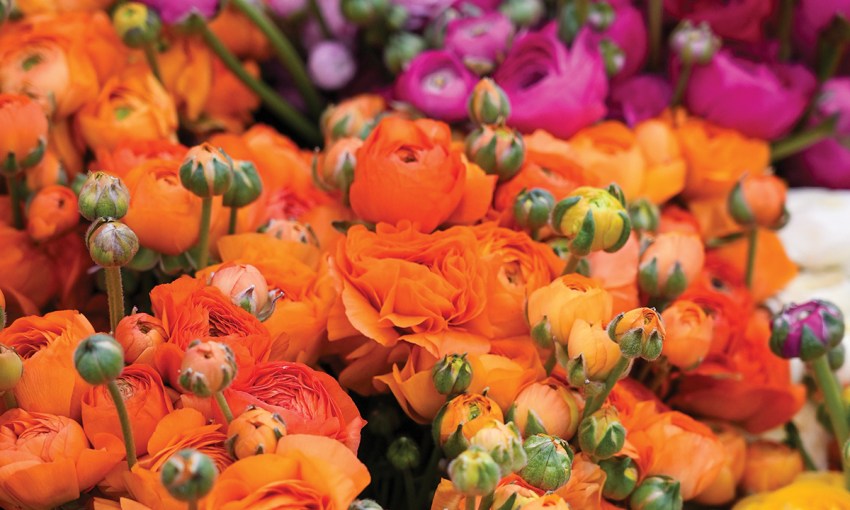Studies have consistently shown that spending time amongst flowers promotes feelings of wellbeing and reduced stress. So, is there a better way to start a day than being surrounded by flowers in their tens of thousands? A recent tour through Tony’s Flowers in Mile End South, answers that question – “if there is, then it must be totally amazing!”.
The flower factory
From the moment you walk into Tony’s Flowers – a wholesale supplier of locally grown and imported flowers in Mile End – your senses are inundated with beauty: a riot of colour, perfume, the early-morning chatter of florists picking their favourites.
It’s flowers that rule this large space. Bloom-filled trolleys line up ready for collection, blended floral fragrances hang in the air, staff and florists converse intently, and as the cool room doors open and close constantly, there’s a fleeting reveal of a kaleidoscope of colours and tantalising flower species; it is all part of the experience.
As South Australia’s leading wholesale supplier of locally grown and imported flowers, Tony’s Flowers plays an important role in this state’s floral industry.
General manager, Michael Vallelonga, is extremely proud of the business’s 33-year career in flowers and is quick to note that, while there is a huge curiosity value here, the business is strictly trade-only.
The focus is on servicing the floral industry in the best possible way, with their undivided attention.
Beginning as a rose grower, owner Tony Amorico purchased land at Lenswood in the early 2000s, successfully planting and harvesting tulips and lilies, other crops soon following. The move to wholesaling their produce (as well as that of other growers) seemed a natural evolution. Building on that success, Tony’s Flowers in Mile End South is now an essential location for florists to flock.
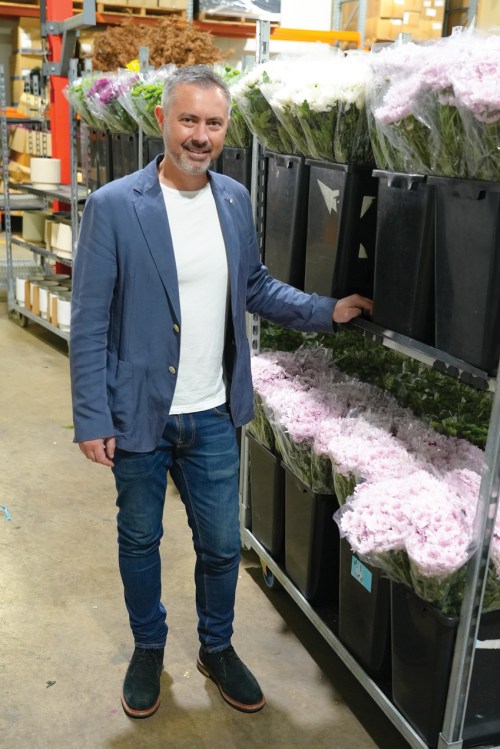
“Florists require a number of key elements; fresh flowers, year-round supply and a selection of flower and foliage types to allow them points of difference. Our role is to supply these,” says Michael.
And it’s not just about flowers, for every bunch of flowers sold, so is a bunch of foliage. These are equally important for florists to become a backdrop that allows blooms to really shine. Buckets and buckets of cut magnolia, privet, blossoms, grasses, and more, are testament to the power of foliage.
Vase life is also critical. Getting every bit of enjoyment from every bloom starts with the grower and moves down the line. The “cool chain” is a system that ensures that once flowers or foliage are cut, they are kept refrigerated from farm gate to wholesaler. The fresher and more robust the product, the more time florists have to arrange, and the more days customers get out of their beautiful bouquets.
Sourcing locally grown produce is always a high priority, especially when fresh is best. The Adelaide Hills has a long history of flower growing, providing exceptional quality tulips, lilies, peonies, and natives equal to anything else across the country.
Climate-controlled greenhouses have made the job of timing harvests much easier and added that key element of supply surety. By opening and closing vents, heating, and cooling inside the enclosed structure you get to mimic spring throughout the year. For example, lilium bulbs, kept dormant in chilled rooms, once removed, and planted, can be tricked into a spring flowering flush, no matter what season.
While local is preferred, extending the supply reach from Tasmania to Northern Queensland, allows access to a broader range of flower and foliage types. The same applies to imported stock.
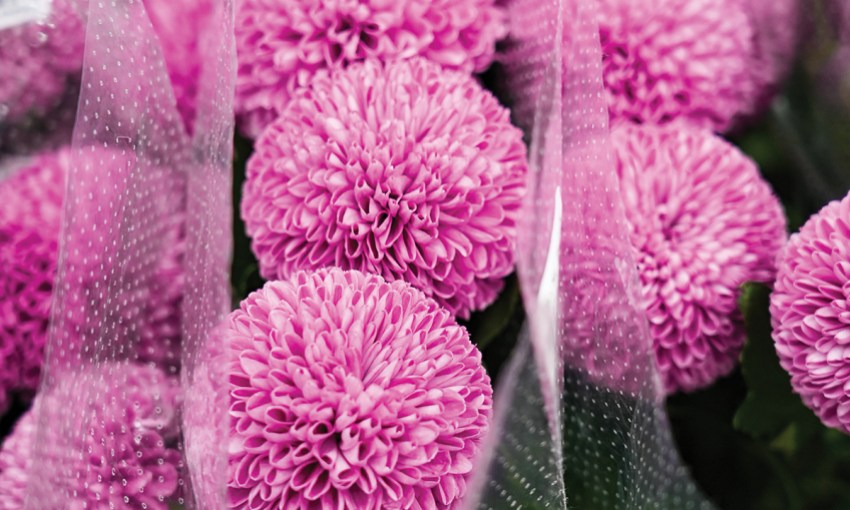
“We have our core lines”, says Michael. “Lilies do so well, everyone loves roses and chrysanthemum are super popular. They used to come in just yellow and white daisy types, now there are disbuds, spiders, ping pong, and an array of amazing colours.”
Michael says seasonality is still a major driver. “Seasonality is still greatly anticipated. It’s what the florists are always keen to access. Even with controlled growing environments, there are still plenty of plants guided by the seasons. Customers are continually excited by the sight of sweet peas, anemones, stocks, snapdragons, and ranunculus. These are our spring and summer flowering beauties.”
Pots of Lilly-of-the-Valley sit on the counter, a time-honoured addition to any Melbourne Cup fascinator. Following the seasons across the country and accessing growers in different regions extends availability of these seasonal flowers, keeping florists and their customers very happy.
A typical day at Tony’s Flowers starts when the doors open at 6am and florists arrive in their cars and vans. Many have pre-ordered, wheeling out flower-and-foliage-laden trolleys, quickly offloading and heading away.
Others spend time wandering through the cool room, a blooming wonderland of tightly packed bunch-filled benches. Even on the warmest days, experienced florists come prepared, adding an extra layer of clothing to enable them to spend more time in the chill, carefully checking over and picking out their flowers. Their keen eyes, trained to spot the best bunch among a sea of others. Staff push out their trolleys, continually replenishing the gaps when armfuls are selected and taken.
Building strong customer relationships is essential. “Not every florist is the same, some may be looking for price points where colour and flower type are less important, while at the other end of the spectrum are event florists with defined themes and flowers to match their exact brief. Knowing what each wants helps us to help them.”
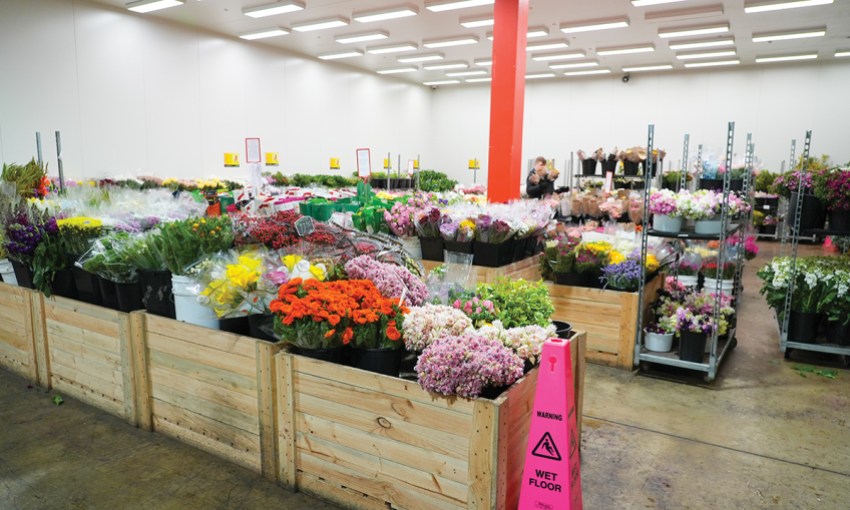
Once the doors close at noon, deliveries of fresh stock arrive, cool-stored and the following day’s florist orders are picked out ready to start the cycle once again.
Michael points out that the flower industry has changed over the years, with social media – including Instagram and Pinterest – having made a huge impact. Once the domain of magazines, the chance to view avant-garde arrangements and cutting-edge flower combinations are now at everyone’s fingertips. The wholesaler’s challenge is keeping up with sourcing the latest and greatest blooms and foliage.
Colours, too, are changing. Wholesalers and growers alike look to Europe where trend standards are set. Taking around 12 months to filter into the Australia floral market, this buffer allows much needed time to plan and plant out crops aligned to oncoming fashion hues.
During the Covid pandemic there was a noticeable spike in flower purchases across the state with many people finding even a simple bunch of blooms on the kitchen bench or dining table lifted spirits and provided much needed joy. Post-Covid, fresh flower sales have remained buoyant.
“At the end of the day we are passionate about flowers,” Michael muses. “I’m still amazed at the skill and artistic flair florists can give to our product. They are incredibly talented in transforming bunches of blooms and foliage into stunning wedding arbours and gravity-defying displays, we are so lucky and privileged to be working with these professionals.”
Asked about what he loves about the floral industry, Michael’s face beams: “Sometimes you take for granted that we sell a product that makes people so happy. Flowers are central to almost all our significant life events, births, marriages, special occasions and of course, that final farewell. We are all so blessed and fortunate to be a part of that journey.”
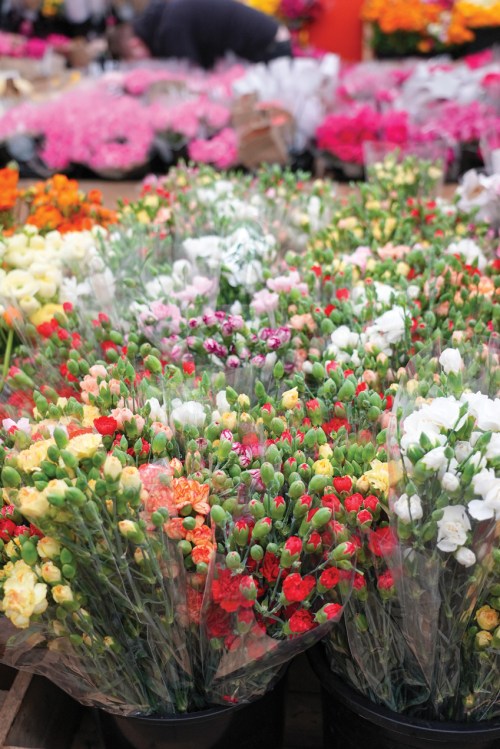
This article first appeared in the November 2023 issue of SALIFE magazine.



